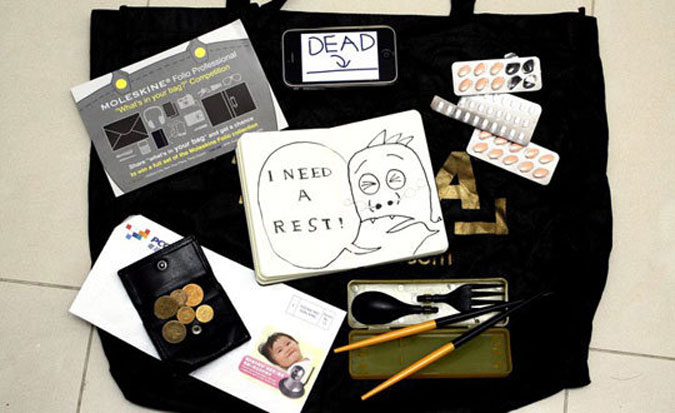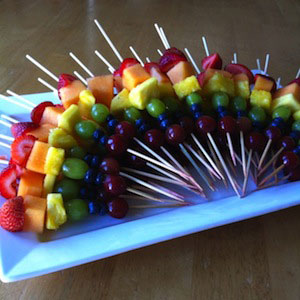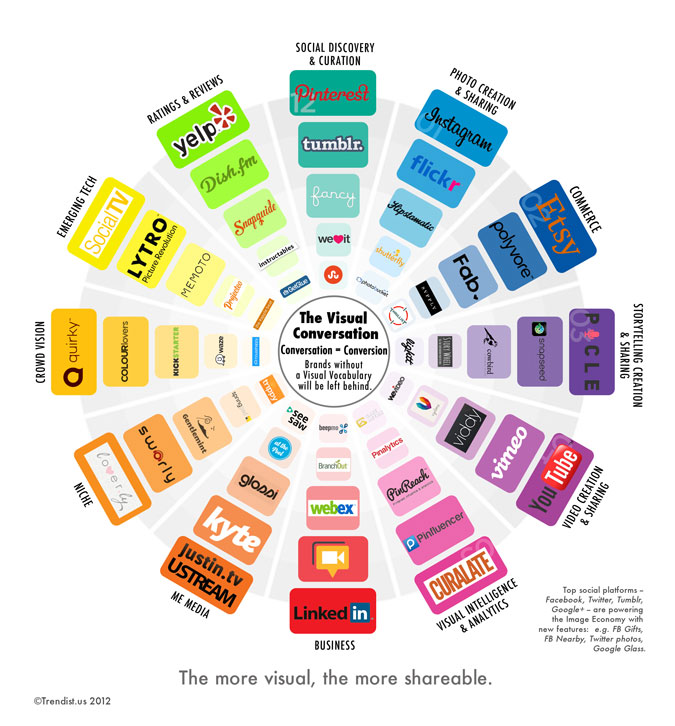Editor's note: Sarah Browne is director of research and strategy at Trendist, a Sausalito, Calif., research company. She can be reached at 415-332-3808 or sbrowne@trendist.us. This article appeared in the November 25, 2013, edition of Quirk's e-newsletter.
Words are so last millennium. We're increasingly ditching text and letting pictures do the talking. In our new show-don't-tell world, we're communicating with brands, companies - and each other - using images, not words. Our overstuffed brains, which process visual information 60,000 times faster than text, crave this new visual vocabulary. Consider these stats:
- Half of the photos ever taken were taken in the last two years.
- Seventy percent of actions taken on social media involve visuals.
- Facebook has 10,000 times more photos than the Library of Congress.
- YouTube streams 133,000 hours of video every day.
- Facebook users post 300 million images a day.
- Instagram logs 8,500 Likes a second.
- Nearly 85 percent of consumers name color as the primary reason they purchase a particular product.
- Pinterest, Tumblr and the latest three-billion-dollar-baby, Snapchat, continue to break records and forge new forms of creative expression.
- The popularity of infographics increased by 800 percent between 2010 and 2012.
Then there's the Oxford Dictionaries word of the year: selfie. With usage up 17,000 percent since its origin, this winning word is a symbol of the cultural and behavioral shift we're experiencing. It's not what your customers say about you, it's what they show.
The visual revolution, image economy or visual Web - whatever moniker you prefer - is kicking the marketing research industry in its wordy butt. This powerfully disruptive mashup of mobile + social is as seismic to our industry as the explosion of big data. The more we rely on that small screen, the more important visuals become. The more visual, the more shareable. Images have become one of our favorite modes of organizing and comprehending the profound amount of information we encounter daily.
What does this mean for marketing researchers?
Researchers today have unprecedented opportunities to dig deeper, learn more and essentially deliver on-demand insights. In the hands of skilled researchers, the 350 million images uploaded every single day can reveal the complexities and quirks of human nature - the why behind data science's what. The leap to the more organic visual Web puts more power-to-the-people tools in the consumer toolkit. The massive opt-in via picture platforms translates into massive opportunity for us.
In the "olden days," we were forced to recruit and pay respondents for their opinions. Now our target audience is willingly uploading personal brand stories via an eclectic array of social technologies. In a now classic experiment, Moleskine asked users to answer the question: What's In Your Bag? Thousands replied, providing the brand with an avalanche of vivid detail (see figure below). Can a text-based methodology yield as much?

Pinterest for MR
Think beyond cupcakes, cats and brides. The 70-million-strong Pinterest is swiftly becoming an impressive rival to Facebook, Instagram and other social sites, with a new series of pins and (finally) an API. It's time to think of the popular platform in a new way: as a compelling marketing research tool. All things aspirational show up on Pinterest boards. They're product-based, dream-centered wish lists, and for qualitative researchers, a digital update of the projective techniques we've trusted for years. As the tools of the visual revolution become mainstream, the benefits to research markedly increase. Respondents are fast growing more comfortable, creative and authentic about expressing themselves via snap, pin and post.
Pinterest is also intrinsically iterative. Over the past 18 months, we've been using the platform to create product- or subject-driven boards during in-person interviews and triads. Within 48 hours, we assess the re-pins, likes and comments and evolve the concepts in response to the insights we've uncovered. Using this accelerated, rapid prototyping model, we've harvested significant feedback from both online and offline consumers in the U.S. and in Pinterest's newly-launched, country-specific (U.K. and France) markets.
Tips on using Pinterest for market research
The visual audit. What's getting pinned from the brand's site? What's ignored? Are your visuals optimized for Pinterest or are they invisible? Where do your pins land? On what kind of boards? One of our clients, who specializes in the pet industry, discovered that the brand was being re-pinned on boards related to women/relationships. Turns out that managing feisty dogs is perceived as similar to managing husbands. This nugget opened up a whole new direction for the company.
Recruiting. Forget the hackneyed five-uses-for-a-brick question. Use Pinterest as a highly effective screener. Looking at a prospect's board for recipes is akin to opening the fridge during an in-home session. Also, you can uncover polarizing attitudes or professional respondents. The best boards to check for polarizing attitudes: Quotes, Inspirations, Funny and, if you're recruiting for Walmart, People of Walmart.
Customer perception and insight. Marketing researchers can use this visual Magic 8 Ball to better predict trends, sales and product preferences. J.Crew recently prelaunched its fall catalog on the platform with the goal of matching pin popularity with production. Pinterest allows your customers to show you new ideas and lead you down a different path. Did Four Monks vinegar ever imagine teaming up with Dawn?
Keywords do count. Keep a close watch on Descriptions. What verbs are pinners using to describe your products and images? A recent academic study revealed that what distinguishes Pinterest from other social sites are four simple yet powerful verbs: use, look, want and need.
Curalate for MR
Why has this picture of rainbow fruit kabobs been re-pinned 76,012 times?

When an iPhone image snapped by your sister-in-law at a baby shower is as likely to be a winning pin as an ad agency's pricey photoshoot, it's vital to understand why. This is where visual analytics powerhouse Curalate comes in. An analytics platform for Pinterest and Instagram, these marketing-without-words gurus know the answer to this burning question and countless more, thanks to Curalate's drool-worthy data, image recognition algorithms and powerful marketing tools. "Unlocking the power of the visual Web" is its genius, which includes offering an easy and comprehensive dashboard, complete with competitive analysis. We've found Curalate to be the kind of partner that consistently innovates and pushes the boundaries.
Other promising tools and technologies
Google Helpouts. Launched earlier this month, Google's new, real-time video service connects people with experts in various fields, with the aim of providing "Real Help From Real People In Real Time." With Helpouts, you can get help anytime from people with expertise across a range of topics - teachers, counselors, doctors, home-repair specialists, personal trainers, hobby enthusiasts and more. Some sessions are free; others are paid through Google Wallet. As a research tool, the new service could provide subject matter experts/influencers in addition to access to brand opportunities. Sephora and Weight Watchers are already offering Helpouts.
The Hunt. A blend of gamification, images and style, the community-driven site for fashionistas provides users with a platform where they can post pictures of must-have outfits and accessories they find on social media. Hunters then track down the coveted product. The goal? Women helping other women look better. Founder Tim Weingarten says the visual Web isn't shoppable and The Hunt is working to fix that. In the meantime, researchers, especially those involved with retail and the women's market, will find this an intriguing tool to tap into the pulse of those passionate about fashion.
These are all examples of how the visual revolution can keep MR professionals in tune with consumers and improve the research function overall. It just might the perfect blend of art and science.
How are you joining the visual conversation?

